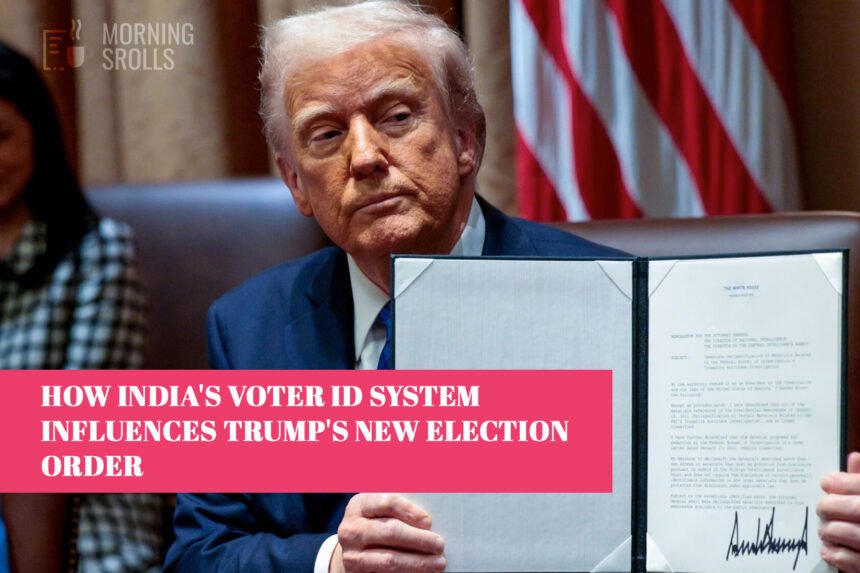U.S. President Donald Trump has cited India’s Voter ID System requirement that voters link their Aadhaar card with their Election Photo Identification Card (EPIC) as an example of how to ensure election integrity. He contrasted this with the more relaxed voter identification system in the United States.
In an order issued on Tuesday, Trump emphasized the differences between the two countries, stating that India connects voter ID to a biometric database, while the U.S. mainly relies on self-attestation for citizenship. He noted that despite being a pioneer in self-government, the U.S. lacks basic election protections that are common in both developed and developing nations.
Under his new order, voters in federal elections will need to provide proof of citizenship, such as a passport or other specific documents, to be eligible to vote.
MUST READ: Election Commission to Eliminate Duplicate Voter IDs in Three Months
Unlike the U.S., which does not have a national election system, India has a strong national Election Commission that oversees election rules and ensures the integrity of the voting process across the country. The Voter Election Laws (Amendment) Act passed in 2021 requires linking Aadhaar with EPIC, and the Election Commission is working on implementing this provision.

In the U.S., elections are governed by state and local laws, which can vary widely. For example, California has a law that makes it illegal to ask for a voter’s ID, which would conflict with Trump’s order. The U.S. also lacks a national identification card, with many people using their driver’s license or Social Security number as identification. Some states issue voter ID cards without photos, while others do not provide any ID cards at all.
Trump’s order is likely to face legal challenges since the Constitution gives states the authority to conduct elections, even federal ones. Democrats have opposed strict ID requirements, arguing that they can disadvantage low-income individuals who may not have access to photo IDs. Republicans, on the other hand, claim that lax ID rules can lead to election fraud.
Voting procedures, including early voting and mail-in voting, also differ by state, and Trump has criticized these rules since losing the 2020 election. His order aims to tighten regulations on mail-in voting.
Trump compared U.S. voting practices to those in other countries, noting that Germany and Canada require paper ballots to be counted publicly by local officials, which helps reduce disputes. He also mentioned that countries like Denmark and Sweden limit mail-in voting to those who cannot vote in person and do not count late-arriving ballots, regardless of the postmark date. In contrast, he pointed out that many U.S. elections now involve mass mail-in voting, with officials accepting ballots that lack postmarks or arrive after Election Day. He also referenced Brazil’s requirement to link national biometric identification with voter ID.










